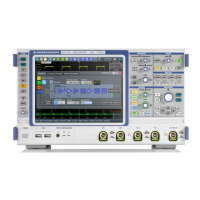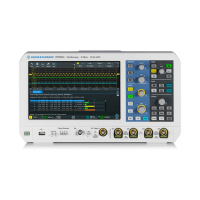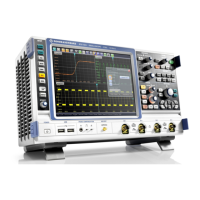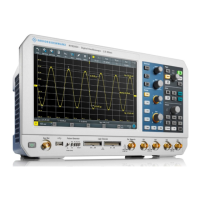Power analysis (option R&S RTE-K31)
R&S
®
RTE
970User Manual 1326.1032.02 ─ 20
●
POWer:QUALity:RESult:POWer:PHASe? on page 1952
●
POWer:QUALity:RESult:POWer:REACtive? on page 1952
●
POWer:QUALity:RESult:POWer:REALpower? on page 1952
●
POWer:QUALity:RESult:VOLTage:CREStfactor? on page 1952
●
POWer:QUALity:RESult:VOLTage:FREQuency? on page 1952
●
POWer:QUALity:RESult:VOLTage:PEAK? on page 1952
●
POWer:QUALity:RESult:VOLTage:RMS? on page 1952
●
POWer:QUALity:REPort:ADD on page 1952
16.3.1.2 Configuring power quality
For details of the configuration settings, see Chapter 16.3.1.3, "Power quality settings",
on page 971.
1. Select "Analysis" > "Power".
2. Under "Input", select "Power Quality".
3. Connect the differential voltage probe and the current probe to the oscilloscope.
4. Deskew the probes as described in Chapter 16.1.1.1, "Auto deskew", on page 955.
5. Connect the probes to the DUT as shown in the "Channels" tab:
6. Select the correct channels of the "Current Source" and the "Voltage Source".
7. Select the "Settings" tab.
8. Set the "Input frequency" according to your signal.
9. Select an "Optimize Scaling" option.
Input

